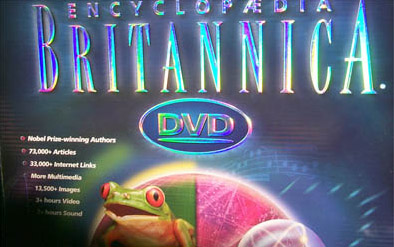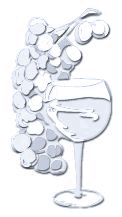Embossing
Often used in combination with foil stamping, embossing is a process that applies pressure to the backside of a material to alter the surface, giving it a three dimensional or raised effect.

The procedure involves the use of two dies, one fitting into the other so that the raised die forces the stock into the recessed die to create the embossed impression.
A die maker engraves the desired image, or copy, into several metal plates, which are the embossing dies for use on an embossing press.
Debossing
Debossing is the term used to describe the opposite process or effect, which involves applying pressure to the front side of a stock forcing the material away or down from the paper surface.
Although it is not as commonly used as embossing, debossing is occasionally used to provide a different effect or appearance that fits a particular theme.

Types of Embossing
Blind Emboss
Blind embossing does not include the use of ink or foil to highlight the embossed area. The change in the dimensional appearance of the material is the only noticeable difference resulting from the embossing.
The blind embossing process provides a clean and distinctive or subtle image on paper stock. It is best used to create a subtle impression or low level of attention to the piece, yet provide some slight form of differentiation for the finished work.
Registered Emboss
Registered embossing is a process that places the embossed image in alignment with another element created with ink, foil, punching, or with a second embossed image. In the illustration below, the blind emboss is aligned within the larger printed circle to produce a registered emboss.

Combination Emboss
Combination embossing is the process of embossing and foil stamping the same image. It involves imprinting and aligning foil over an embossed image to create a foil emboss. A sculptured die, generally made of brass is used for this procedure.

The process requires close registration that must be controlled to keep the image and foil matched precisely. A combination die is used to foil stamp and emboss in one operation. A cutting edge around the outside of the die cleanly breaks the excess foil away from the embossed area. Holograms can also be embossed with this process.
Scorching
Scorching is similar to glazing except that it is not used to polish the stock. Instead, as the temperature of the die heating plate is increased beyond the normal temperature range, a scorched effect is created in the embossed image resulting in an antique or shaded appearance to the stock.
A lighter colored stock is best for this procedure to provide a unique two-toned appearance. Caution should be used in requesting this effect, since it is easy to burn the stock if too much heat is used.

Pastelling

Pastelling is also referred to as tint leaf embossing. It involves the process of using a combination die to provide a subtle antique appearance to a substrate that is foil stamped and embossed.
Pearl finishes, clear gloss, or similar pastel foil finishes can be selected giving a soft two-color antique look (without scorching) to the embossed image.
Lighter colored stocks work best to provide this soft contrasting effect.
Glazing
Glazing refers to a finished embossed area that has a shiny or polished appearance. Most often this process involves heat that is applied with pressure in order to create a shined and burned impression into the stock.
Generally, darker colored heavier weight stocks work best to create this polished effect and to eliminate or soften any burned appearance that may result from the heat. When used with foil, the process creates a slightly brighter appearance to the foil.
Appearance and Shapes
Embossing is basically used to create an effect. The greatest concern and emphasis on the client’s behalf should be placed on the outcome of the embossed effect.
In order to achieve the most distinctive effect, it’s important to understand the embossing process and the types of dies that are used for embossing.
The three factors that need to be controlled during the embossing process are:
- Pressure: The intensity of the impact on the weight of the stock being embossed.
- Heat: The ability to keep the heat consistent and at a proper level for the best impression.
- Die Depth: The client’s artwork or the engraver’s efforts will initially determine this, however, if by looking at the artwork it appears necessary, the die may need to be tooled to gain greater depth.
Planning Tips
Stock Selection
- Factors to consider in stock selection include surface characteristics, grain, gauge, weight, material density, printing inks or coatings to be applied, and finishing processes to be used.
- Generally, the stocks most receptive to embossing dies are stocks that are uncoated, heavier in weight, and have a felt finish.
- Embossing on heavier stocks will most often provide greater dimensional depth and detail.
- If some of the stock being embossed or hot stamped is thicker in gauge, advise the engraver to “tool” increased depth into the die to give more definition when it is embossed. The greater depth will compensate for thickness, memory, and stock resistance.
- It is desirable to have the die “bottom out” or strike the paper at the point where the stretch of the material comes close to reaching it’s maximum limit without cracking or tearing.
- Coated, varnished, or lightweight stocks have a tendency to crack when embossed. Paper and ink have limitations in the degree that they can be stretched before cracking. Coatings cannot be stretched, so care should be taken with any type of embossing on coated or varnished stock.
- Embossing with foil instead of ink can assist to eliminate cracking on coated stocks.
- If heat is applied to the embossed die, such as in foil stamping or glazing, it will increase the chances of the coated and lightweight stock becoming brittle, which may cause the embossing process to crack the stock after the die strikes the material.
- Textured stocks may compete with the embossed image if the texture is too deep. However, for a blind emboss, a slightly textured stock provides the best results.
- Consider the direction of the paper grain when embossing or scoring. Emboss and score in the direction of the grain since going against the grain can cause cracking problems. Occasionally, such as with borders, it is necessary to go against the grain to achieve the desired effect.
- Recycled paper may cause the embossing to be inconsistent in appearance from sheet to sheet, since the higher the content of recycled fibers, the weaker the stock when exposed to heat and pressure. Use paper with 30% post-consumer fiber or less.
- Long-fiber sheets are the best for embossing, since they are capable of handling a wider variety of embossing dies, particularly the deeper dies.
- Sulfate and foils are the best board stocks to be used when embossing packaging materials.
Artwork Preparation
- Set copy or create images with fonts above 12 point and lines thicker than 2 point. Use images that are more open and have fewer thin lines. Embossing will have a tendency to fill in small, enclosed areas, thin lines, or closely kerned text.
- Thin serifs do not emboss well unless they are large and well defined.
- It is generally best to prepare images slightly larger than the size desired. This is to compensate for the resulting dimensional effect that occurs because the paper thickness tends to change the size of the image.
- For greater depth, provide more letter space in the artwork.
- Copy or images with very close registration may involve extra work and greater cost. Be careful not to use trapping techniques on any artwork appearing adjacent to embossing and foil stamping.
- Screened copy and images with changes in tones do not reproduce effectively into dies for embossing, so line art should be created as if it were a solid image or solid color.
- If a beveled die is to be used, the artwork and copy for the image may need to be slightly enlarged to compensate for the image and copy reduction that occurs due to the beveled edges.
- Keep images at least 1/2” away from the edge of the stock being embossed in order to eliminate wrinkles that will occur if the embossed image is too close to the edge of the stock.
Image and Die Preparation
- If film negatives are to be made for the dies, they must be prepared emulsion up.
- If the image has no appearance that easily indicates the direction of the image, mark the film “read right” to show which side prints up. Identify the top or bottom of the image so the engraver will understand how the die must be prepared for proper embossing placement.
- Color key proofs, used for viewing the proper image direction, are of much assistance to the engraver when creating dies.
- If the embossed image is to register with a printed image, make sure the engraver has one of the primary negatives for guidance.
- Make sure the film image is not distorted or altered in size from the original copy.
- If stock is to be embossed and also foil stamped, prepare a separate piece of film or separate digital artwork for each image.
- For multi-level dies (also referred to as sculptured or dimensional dies), an engraver must be provided with a color coded, opaque film for each layer to be embossed. The opaque film identifies the silhouette area of each layer. Also include a set of color keys that will be in register with the film and visually show the intended image.
- As a general practice, make sure the engraver has a color key, a mock-up of the design, and any other samples illustrating and defining the edges, shapes, and levels of the embossed image in order to assist with identifying exactly how the image is to appear when embossed.
General Use of Embossing
- Logos or accents surrounding logos.
- Borders or highlights surrounding images or information used to attract attention.
- Elegant accents for distinctive symbols, images, graphics, or lines.
- Occasionally used for security in the form of seals or symbols of authenticity on certification for important documents.